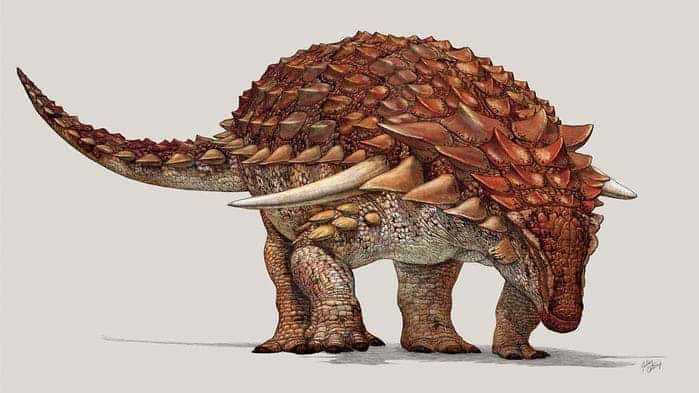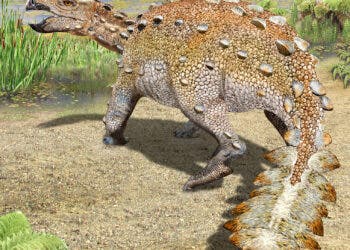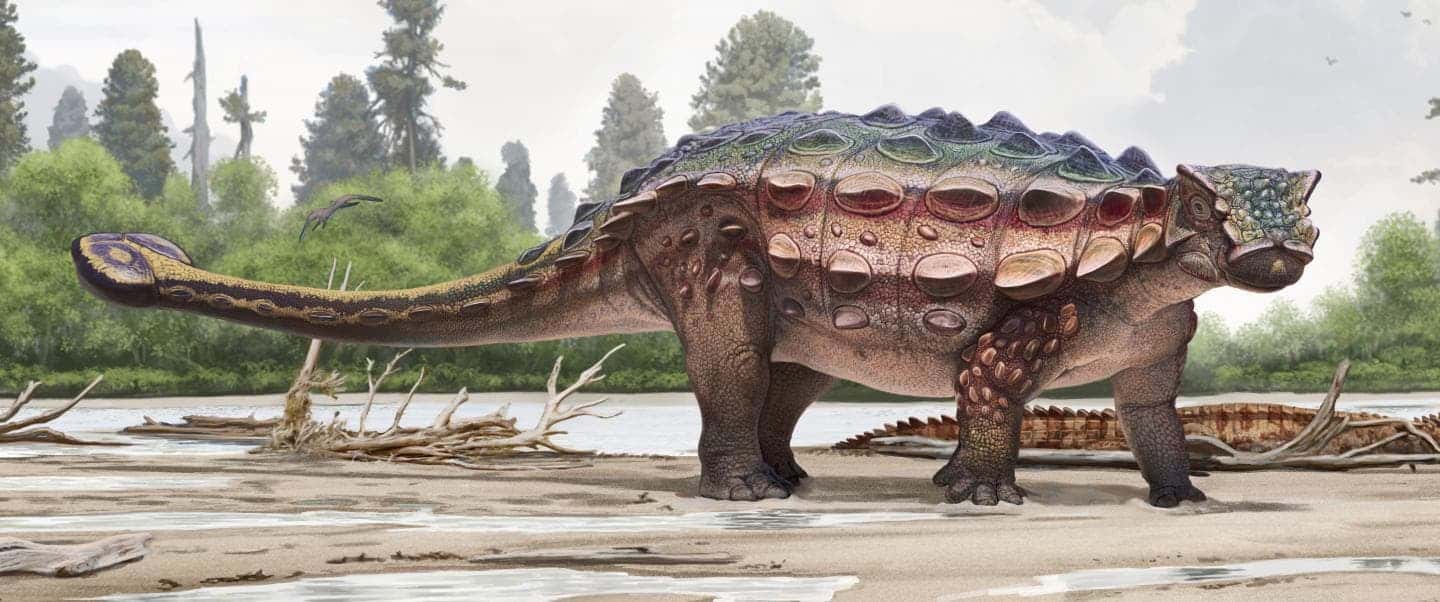The best defense is not needing to fight.

When you want to deter predators from eating you, becoming big can be a strategy in itself. Developing an armor is even better — you basically become a tank, and no one wants to take on a tank. Well, almost no one.
If it lived today, a 2,900-pound (1300 kg) nodosaur armored with horns and scale plates wouldn’t fear any other animal. But during the days of the Cretaceous, 110 million years ago, predators themselves were much fiercer than today. A new fossil analysis revealed the color of the dinosaur, and suggests it might have employed camouflage to keep itself safe.
In the dinosaur’s fossilized hide, researchers identified pheomelanin, the same pigment that gives redheads their hair color.
“It gives you a sense of how nasty the theropod predators would have been back in the Cretaceous,” said Caleb M. Brown, a paleontologist at the Royal Tyrrell Museum of Paleontology in Canada and an author of the new report.

The excellently-preserved fossil was found in Alberta, Canada, by accident — in a mine which was once part of a large inland sea that cut North America into eastern and western halves. It’s so well preserved that it allowed paleontologists to see that its intensity of pigmentation decreases from its back to its sides. This pattern might have been very useful in camouflage because it keeps animal’s top half darker even in broad daylight. It was also suggested that the dinosaur corpse settled on the seafloor back-first, better preserving that side than the others and giving the impression that it was more intensely colored. But study co-author Donald Henderson disagrees. He says that according to his analysis, the dinosaur was completely buried quite soon, so its back and its sides are equally well preserved.
There are also other reasons for this type of pigmentation — called countershading — to develop. Thermoregulation, protection from abrasion and sexual display have all been discussed.
But regardless of how the dinosaur used the color, it’s impressive that the pigmentation was preserved for such a long time.
“I never seriously thought that color preservation on this scale would have been possible,” said Thomas R. Holtz, a vertebrate paleontologist at the University of Maryland who was not involved with the study. “This skeleton is truly spectacular in terms of the quality of completeness.”
This dinosaur was a nodosaur, part of the ankylosaur group. They were mostly herbivores and most of them were armored, sporting bony osteoderms. Bulky quadrupeds, they short, powerful limbs. They emerged at the beginning of the Jurassic and faded away with the rest of the dinosaurs, at the end of the Cretaceous.




